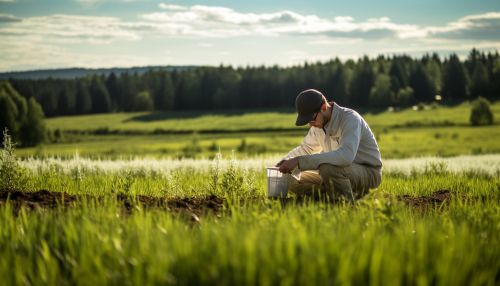Soil Monitoring
Introduction
Soil monitoring is a scientific practice that involves the systematic collection of soil data over time. It is a critical aspect of environmental science, agriculture, land management, and other related fields. The primary purpose of soil monitoring is to track changes in soil quality and to identify trends that could impact the environment or human activities.


Soil Monitoring: An Overview
Soil monitoring involves a range of methods and techniques used to assess the physical and chemical properties of soil, as well as the biological organisms it contains. These methods can range from simple visual assessments to complex laboratory analyses. The data collected through soil monitoring can provide valuable information about the health of the soil, its capacity to support plant growth, and its potential impact on the environment.
Importance of Soil Monitoring
Soil monitoring is essential for several reasons. Firstly, it provides crucial data that can inform land management practices, helping to ensure that soil resources are used sustainably. Secondly, soil monitoring can help to detect changes in soil quality that could indicate environmental problems, such as pollution or erosion. Finally, soil monitoring can contribute to our understanding of larger environmental processes, such as climate change and the carbon cycle.
Techniques and Methods
There are numerous techniques and methods used in soil monitoring, each with its own strengths and limitations. Some of the most common techniques include:
Soil Sampling
Soil sampling is a fundamental technique in soil monitoring. It involves collecting samples of soil from different depths and locations, which can then be analyzed in a laboratory. The data obtained from soil sampling can provide a detailed picture of the soil's physical and chemical properties, as well as its biological content.
Soil Analysis
Soil analysis is the process of examining soil samples in a laboratory to determine their properties. This can involve a range of tests, including pH testing, nutrient analysis, and tests for contaminants such as heavy metals.
Remote Sensing
Remote sensing is a technique that uses satellite or aerial imagery to monitor soil conditions over large areas. This technique can be particularly useful for detecting large-scale changes in soil quality, such as those caused by deforestation or large-scale agriculture.
Challenges in Soil Monitoring
Despite its importance, soil monitoring faces several challenges. These include the high cost of soil analysis, the difficulty of obtaining representative soil samples, and the complexity of interpreting soil data. Additionally, soil monitoring requires a high level of expertise, which can be a barrier to its widespread adoption.
Future Directions
Advances in technology are likely to have a significant impact on the future of soil monitoring. For example, the development of portable soil testing devices could make soil analysis more accessible and affordable. Similarly, advances in remote sensing technology could improve our ability to monitor soil conditions over large areas.
